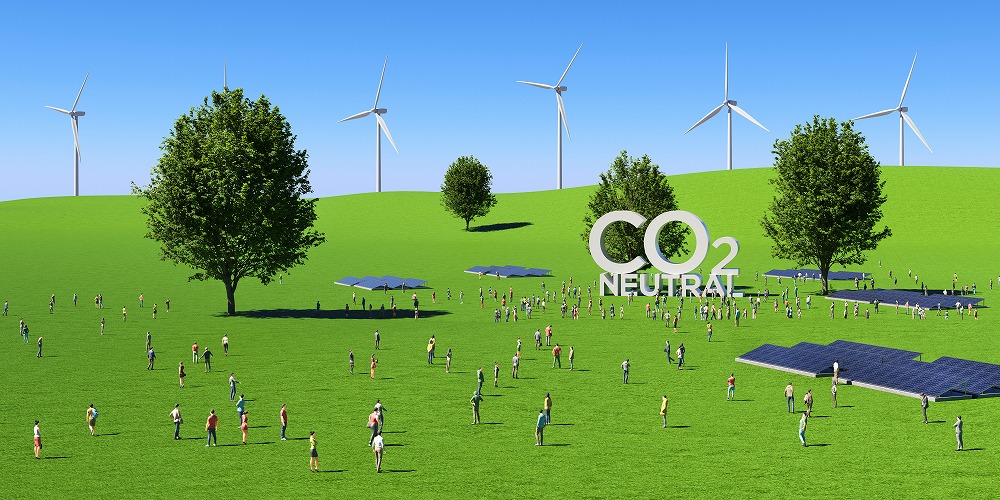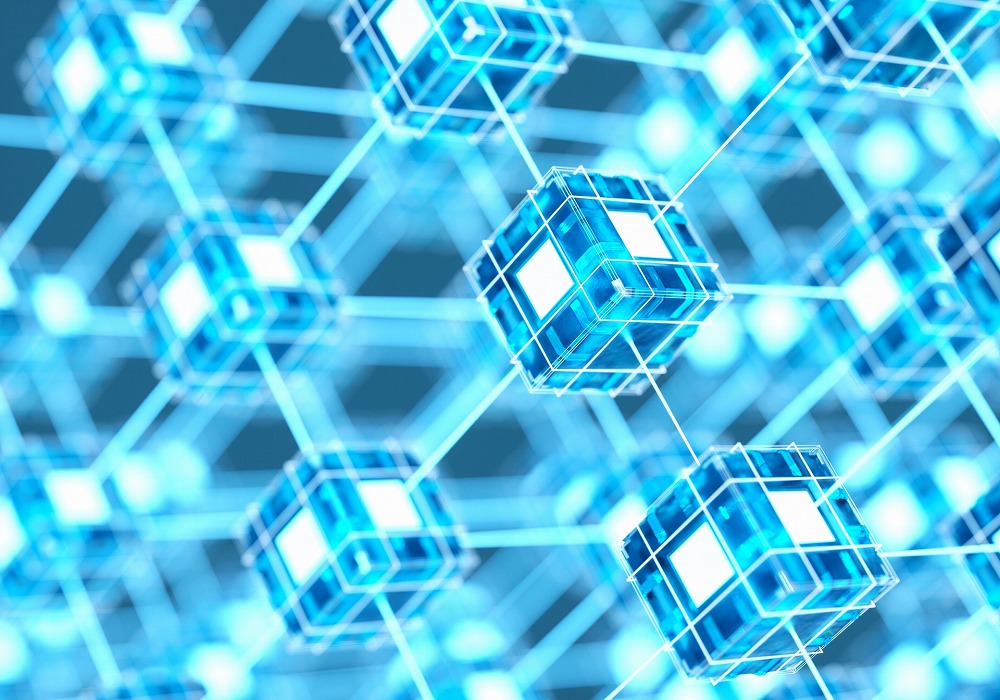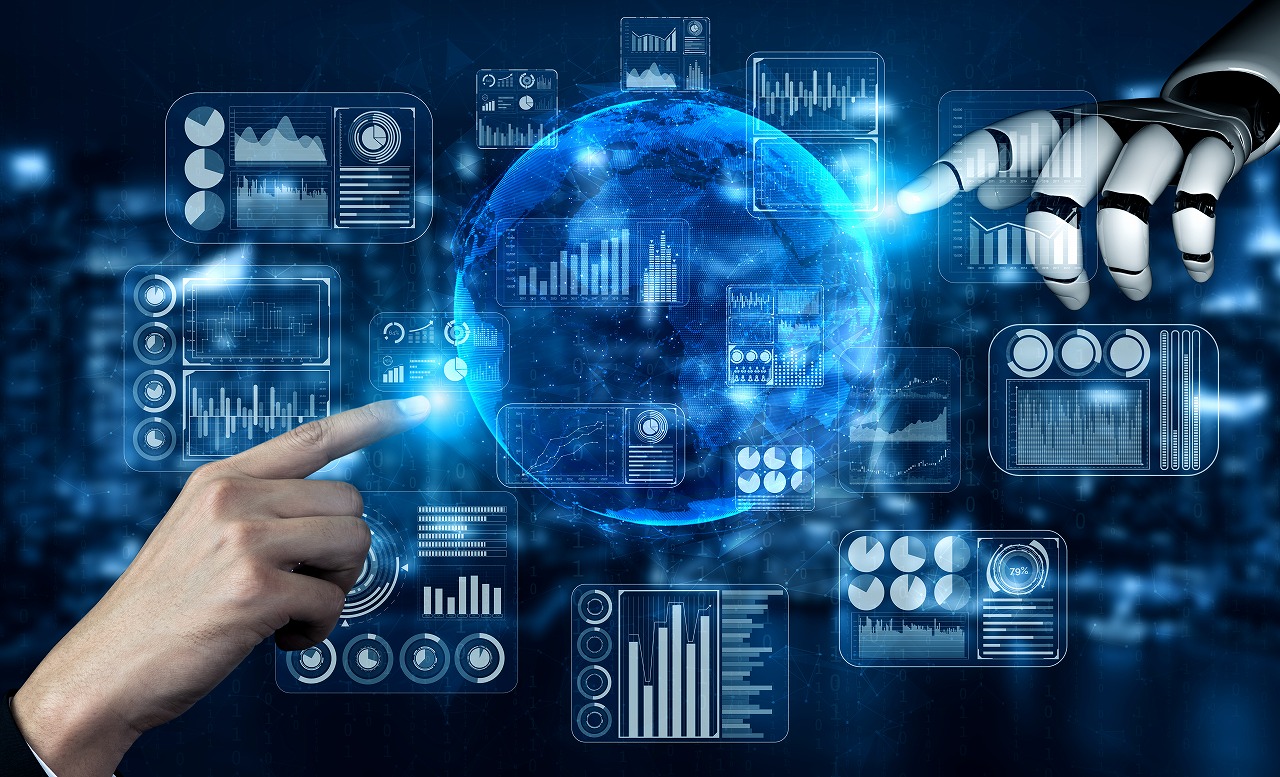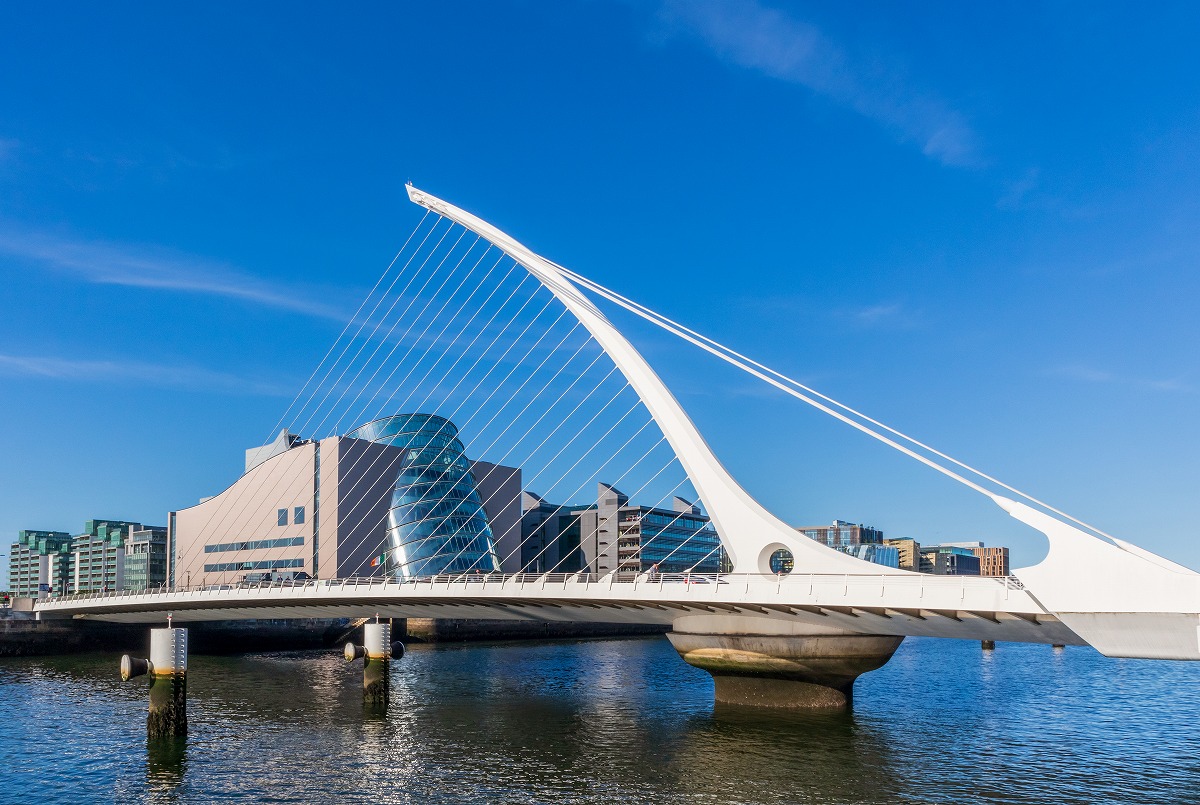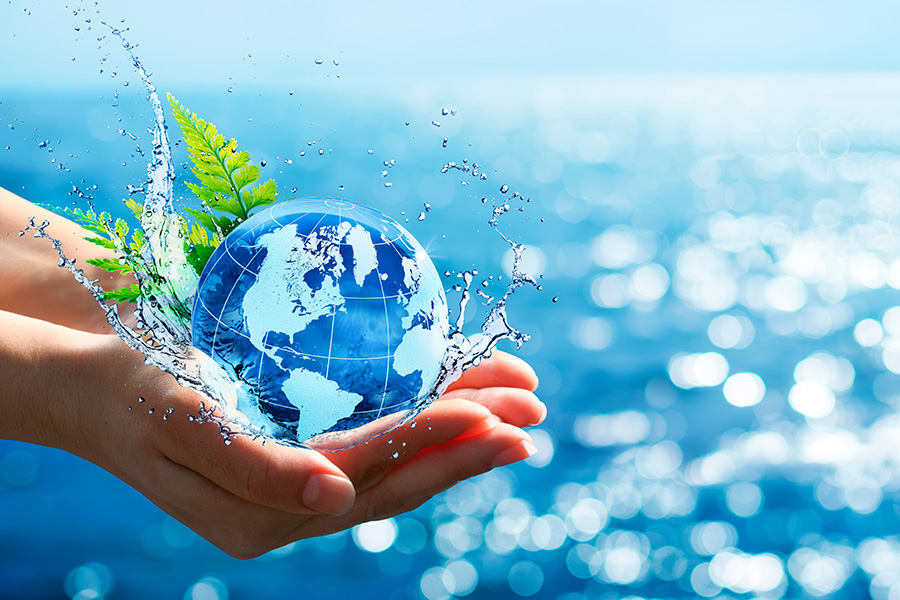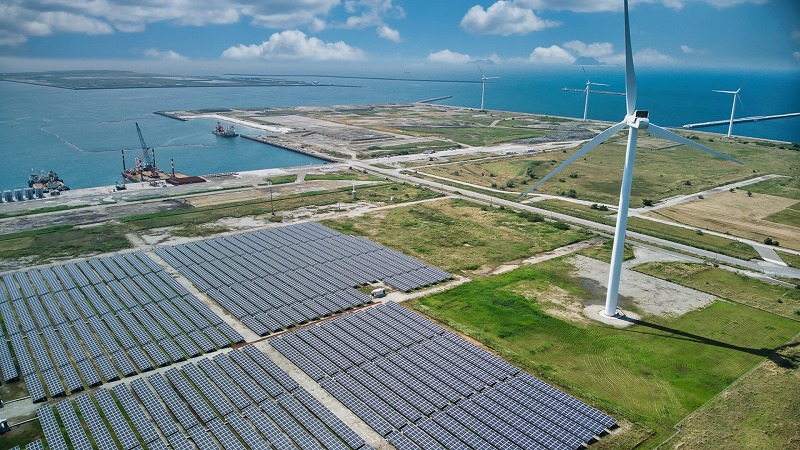
Will create a Data Center
which highly fits to an ESG investment
- ALL
- CORPORATE
- BUSINESS
- OTHERS


For a sustainable future for data centers and digital infrastructure
Data center investment in Japan is booming, and demand is expected to continue to grow. On the other hand, we are facing the warning about the enormous power consumption. In addition, most data centers are concentrated in Tokyo and Osaka, and it is still difficult to realize the national policy, i.e. "optimal arrangement of data centers in Japan". We Digital Infrastructure Lab are here to support a project to develop and utilize data centers and * digital infrastructure for the stakeholders auch as land owners, data center operators, developers, investors, energy operators, data center related equipment manufacturers, government, local governments.
* Not limited to data centers, it covers the fields of e-commerce logistics facilities, digital-related laboratories, base stations / communication networks, and renewable energy facilities.
To realize "ideal" digital infrastructure investment
- ALL
- TOPICS & NEWS
- Founder Message
- ESG + DC
2024.07.25
Advancing Data Center Construction Plans: Prioritizing Power and Land Acquisition
Japan is a country susceptible to natural disasters such as earthquakes, typhoons, and river floods. Historically, it has been crucial to manage data in locations that are resistant to such natural disasters and can minimize damage, ensuring stable operation of data centers.
Disaster-resistant locations are areas without nearby active faults, and regions not at risk of flooding from tsunamis, storm surges, or heavy rainfalls. However, recently, there has been a tendency to prioritize securing power and land in data center construction plans, while also considering disaster risks.
“ESR Cosmo Square” in Osaka Coastal Area
Suminoe Ward in Osaka City is located within 10 kilometers of Osaka’s city center and is a diverse area with commercial facilities in the coastal region, high-rise apartments in urban zones, and numerous factories in industrial areas. The ESR Group’s first data center project, “ESR Cosmo Square,” plans to construct a campus-type data center consisting of three buildings with a total IT power capacity of up to 98 MW in this area, which had previously seen no data center developments.
The buildings will be 5 stories high, measuring 40.34 meters (with a maximum height of 43.00 meters), and will incorporate disaster prevention measures such as raised floors and waterproof walls by surrounding the premises with walls.
With numerous cloud network connection points, telecommunications operators, and major IT companies concentrated in the surrounding area, and an increasing number of hyperscaler bases, a high demand for data centers is anticipated. The total asset value of “ESR Cosmo Square” is expected to reach $2.15 billion (approximately ¥314 billion), depending on the facility’s operational status.
Background: The Spread of Generative AI
The backdrop to this development includes the spread of generative AI, such as ChatGPT. According to a survey released by Mitsubishi Research Institute in May 2024, the amount of computation handled by data centers could swell to several hundred thousand times that of 2020 by 2040. Although data center operators are making efforts to improve energy efficiency, the demand surge shows no signs of slowing down.
Without prioritizing the acquisition of power and land, Japan may fall behind in global IT trends such as the evolution of generative AI.
Expecting Thorough Disaster Measures in Data Center Construction
Osaka, introduced in this case, is the second largest commercial hub after Tokyo, with a well-established population and infrastructure, making it the fifth-largest data center market in the Asia-Pacific region excluding China.
While the importance of data centers is increasing in the context of management reforms by large Japanese corporations, from a disaster prevention perspective, it is hoped that construction will proceed under meticulously prepared plans that consider all possible scenarios.
2024.07.16
Construction of Data Centers Progressing on Former Sites of Leading Manufacturers
The repurposing of former factory sites of Japan’s leading manufacturers into data center locations is gaining momentum. The appeal of these sites for data center use lies in their vast land areas and ease of securing power supply. This article introduces the specific situations of these developments.
1. Marelli
Australian real estate development giant Lendlease has entered the data center business, advancing the construction of its first data center on land acquired from auto parts manufacturer Marelli in Nisshin Town, Kita Ward, Saitama City.
Lendlease, headquartered in Australia, has bases in Asia, Europe, and North America. The current facility, their first project in the data center business, has been under construction since June 2022 on Marelli’s former factory site, approximately 33,000 square meters and about 30 kilometers from central Tokyo.
The first-phase building, a six-story structure with a total floor area of approximately 30,000 square meters, is progressing with interior construction and will have an IT load capacity of 48 megawatts. The aim is to commence operations in the fall of 2024, with plans to develop a second-phase building of a similar scale on the adjacent site.
2. Hino Motors
Hino Motors has announced plans to sell part of the land at its Hino Plant in Hino City, Tokyo, adjacent to its headquarters. The sale will involve 114,000 square meters, equivalent to one-third of the factory’s site. The company is proceeding with a designated competitive bidding process, limiting the use to data center construction.
Considering the numerous residential areas around the site, the use has been designated for data centers to minimize the impact on the living environment, with bids requested from multiple companies. Some truck parts production remains on the land to be transferred, which will be moved to the Koga Plant in Ibaraki Prefecture before the land is cleared and handed over.
Due to the impact of engine fraud, Hino Motors reported a consolidated net loss of 84.7 billion yen for the fiscal year ending March 2022. The consolidated operating profit for the fiscal year ending March 2023 is also expected to decrease by 82% year-on-year to 6 billion yen, indicating ongoing difficulties.
The purpose of the land sale is to “further stabilize the financial base through the utilization of idle assets” (according to the company).
3. Sharp
Sharp announced it has signed a basic agreement, including exclusive negotiation rights, with SoftBank for the partial sale of its Sakai Plant in Sakai City, Osaka Prefecture, where LCD production will be halted by the end of September.
SoftBank plans to build a large-scale data center for the development of generative AI (artificial intelligence) using the land and part of the building, aiming to start construction in the fall of 2024 and full-scale operations by 2025.
Regarding the utilization of the Sakai Plant site, Sharp has also agreed to start discussions with KDDI and others for establishing an AI data center. Separate negotiations will continue with SoftBank regarding a different portion of the site.
Diversification of Management Initiatives
As data center construction progresses across various locations, approaches to the theme of data centers are diversifying.
It has been reported that Japan’s NEC is considering selling its data centers. Additionally, IT infrastructure and service giant NTT Data Group announced its entry into the real estate investment trust (REIT) market focused on data centers. This marks the first establishment of a data center-focused REIT by a domestic company in Japan.
The aim is to start operations in March 2026, with an expected asset size of up to 100 billion yen. NTT Data intends to utilize this new framework to capture the rapidly increasing demand driven by AI and accelerate data center construction.
The growing importance of data centers as a management theme is becoming evident in the business reforms of major Japanese corporations. As more companies are expected to plan new initiatives, we will continue to introduce these developments.
2024.06.26
Demand for Hyperscale Data Centers Accelerating Due to Generative AI Usage to Quadruple from 2023 to 2045
IDC Japan has released an analysis regarding the demand for hyperscale data centers in Japan. The analysis suggests that by the end of 2045, the demand for hyperscale data centers could reach approximately four times the domestic capacity of 2023.
Note: Hyperscale data centers are massive data centers used by mega-cloud service providers such as AWS, Google, and Microsoft to offer cloud services.
Amid the rapid growth of the cloud service business, several large-scale data centers are already being expanded in Japan, including in Inzai City, Chiba Prefecture. Additionally, the demand for using generative AI functions in cloud services is expanding. High-spec servers for generative AI purposes are often deployed within hyperscale data centers. As a result, the demand for hyperscale data centers is increasing. To meet this demand, data center operators and real estate companies are constructing new data centers to increase capacity supply.
Power Consumption by Data Centers Expected to Increase Sixfold by 2040
Data centers equipped for generative AI have HPC servers and GPU servers installed, which consume large amounts of electricity. Additionally, significant power is required for cooling. Consequently, with the proliferation of generative AI, power consumption is expected to increase explosively.
Regarding global data center power consumption, projections indicate that without energy-saving measures, it will exceed six times the 2022 levels, reaching 2,761 terawatt-hours by 2040.
Urgent Issues: Smooth Power Supply and Securing Renewable Energy Sources
In Japan, there is an urgent need to address the issue of power supply to meet the accelerating demand for data centers. With an increasing number of companies declaring a carbon-zero policy by 2050, more data center operators are securing renewable energy sources through Power Purchase Agreements (PPA). The Electricity and Gas Market Surveillance Commission of the Ministry of Economy, Trade and Industry is also taking action. They are considering measures to guide the location of newly expected data centers, due to the expansion of generative AI usage, to regions rich in renewable energy.
“Ensuring Power Supply” and “Securing Renewable Energy Sources” are crucial issues for the rapidly growing domestic data center market. We will continue to pay attention to measures addressing these issues in the future.
2024.06.12
Exploring the Strong Performance of NVIDIA
On the 5th, the market capitalization of the US semiconductor giant NVIDIA surpassed $3 trillion (approximately 468 trillion yen) for the first time.
NVIDIA’s market capitalization first broke the $2 trillion mark in February this year. The company’s performance has been rapidly expanding, supported by semiconductors for generative AI. It has increased its presence as a driving force in the US stock market, surpassing $3 trillion just over three months after exceeding $2 trillion.
Sales to data centers, including AI, are boosting performance. In the financial results for February-April 2024 announced in May, net profit increased to $14.881 billion, about 7.3 times the same period last year, and sales increased to $26.044 billion, about 3.6 times.
The Strength of NVIDIA: The Background
NVIDIA manufactures GPUs (graphics processing units). GPUs are chips designed for display functions such as video, image, and animation display and have been used to display images smoothly in gaming PCs and other devices.
Now, the demand for GPUs is expanding. The catalysts for this are “data centers” and “generative AI” represented by ChatGPT.
Until now, it was common for data centers to be equipped only with CPUs (Central Processing Units), but with the spread of AI, the trend is for data centers to be equipped with GPUs in addition to CPUs. However, only about 10-20% of data centers are currently equipped with GPUs.
This situation will change with the spread of generative AI.
Generative AI, such as image generation and natural language generation, requires a process called “inference” to run an AI model created by learning and reach a conclusion. When you ask ChatGPT a question, the answer you get is the result of “inference.” The inference process requires more calculations than the learning process. Therefore, it is necessary to also install a GPU, which is suitable for large-scale calculations.
In the future, it is clear that generative AI will become the main task of generating information in most data centers worldwide, and it is said that within 10 years, most data centers in the world will be equipped with GPUs.
NVIDIA’s “CUDA”: The Standard for AI Developers
Unlike CPUs, GPUs are good at performing large amounts of calculations simultaneously in parallel, but to bring out their capabilities, a development environment for GPUs is required.
NVIDIA’s “CUDA” is one such “development environment for GPUs,” and since CUDA has become the de facto standard among neural network researchers, many libraries have been created on top of it. Now, at least when it comes to the learning process, there is almost no choice but to use CUDA.
CUDA is a development environment created by NVIDIA for its own GPUs, so as a result, it has become the standard to “use NVIDIA in the neuron learning process.”
CUDA protects NVIDIA as a competitive “moat” that rivals cannot easily overcome.
Will NVIDIA Have a Near Monopoly for the Time Being?
According to the British research company Omdia, NVIDIA will have a 77% share (2023) of the global market for AI semiconductors for data centers. The company’s cutting-edge GPUs are highly sought after by companies developing AI.
For the time being, NVIDIA is expected to have a near monopoly on the GPU market for data centers. However, we will also be keeping an eye on the movements of other companies that deal with GPUs.
2023.07.05
Google warns Irish government moratorium on data center development
Irish government restricts data center development
Ireland’s The Commission for Regulation of Utilities (CRU) has decided to limit the impact by imposing a de facto moratorium on new data center development in the Dublin metropolitan area.
Ireland’s national transmission operator EirGrid said in response that it would only consider new applications for grid connection on a case-by-case basis. The restrictions could reportedly last until 2028.
Martin Shanahan, CEO of Ireland’s Industrial Development Authority (IDA), recently said that new data centers “are unlikely to occur in Dublin and the East Coast at this time.”
Google has asked such Irish regulators not to impose a moratorium on data center development in the country.
In The Commission for Regulation of Utilities (CRU) filing, the company said search and cloud companies must “absolutely” avoid a moratorium on data center development.
Google said such a ban would send a “wrong signal” about Ireland’s digital economy ambitions, and would affect the country’s infrastructure, according to a Freedom of Information request first reported by The Irish Times. It adds that it makes further investment “impossible”.
In the filing, Google called for more transparency about where the Irish network has existing power capacity, as well as being clearer and more open about EirGrid’s projections of data center power usage growth. I think you need to.
Growing Demand for Cloud Computing, Google’s Proposal
Google, which launched its first data center in Ireland in 2012, has proposed a new pricing structure for data center operators who reserve more capacity than they ultimately need or grow to that capacity too slowly. bottom.
“Transmission tariffs can be designed so that consumers who are not seeing increased demand towards maximum reserved capacity will be charged more than consumers who are demonstrating an increase each year.” says.
EirGrid and politicians have previously suggested moving data center development to the west of Ireland (away from Dublin’s constrained areas and closer to renewable energy sources), but Google says this is not a viable solution. I point out that it is not.
“The demand for cloud computing in Dublin is growing. We are unable to provide services.”
Another AWS filing says Ireland has missed opportunities in the past to address supply issues.
“Over the past decade, we have had opportunities to do reinforcement work, prepare the grid for growth and investment, and prepare the grid for more intermittent integration of resources,” he said.
Both the Social Democrats and the People Before Profit parties have been calling for a nationwide moratorium on future data center projects for the past 12 months. The PBP bill was an absolute ban on data centers, liquid natural gas plants and new fossil fuel infrastructure.
In Dublin last month, South Dublin County Council (SDCC) voted to block future data center construction in the county as part of a new development plan.
What is the background behind the Irish government’s moratorium on data center development?
Irish Government Behind Data Center Development Moratorium
The Irish government’s achievement of emissions and renewable energy targets is behind this.
According to EirGrid, data center energy usage is projected to increase by 9TWh by 2030, ranging from 23% to 31% of Ireland’s grid supply in 2030. This comes at a time when the government wants to reduce emissions by 60-80% by increasing the share of renewable energy. At the same time, governments want to decarbonise by moving heating and transportation to electricity, further increasing demand on the grid.
According to The Irish Times, EirGrid has agreed to connect an additional 1.8GW of data centers to the grid, with current peak demand of around 5GW, and a further 2GW of applications ready. That’s it.
The Government Statement on the Role of Data Centers in Ireland’s Enterprise Strategy 2018, published in 2018, emphasized the positive role of data centers in the country’s economic performance. However, it will now be “aligned with sectoral emissions caps and renewable energy targets, concerns about continued security of supply, and demand flexibility measures currently needed. In order to secure it, it will be reviewed. “In addition, further tightening of regulations will be considered,” it is reported.
Will it work or will it backfire?
The Irish government imposes a moratorium on data center development, which is in high demand worldwide. It seems that the moratorium continues while receiving a warning from Google. Will this decision work or will it backfire? We will keep an eye on trends.
2023.03.26
Data center facility inspection robots to be fully deployed from April 2023 (NTT DATA)
NTT DATA Co., Ltd. is working to remote/automate equipment inspection work using robots at the data center “NTT Shinagawa TWINS DATA Building” (hereinafter referred to as “Shinagawa Data Center”) operated by the company. announced that it has confirmed that it is possible to reduce the equipment inspection work that was previously done by about 50%.
From April 2023, NTT DATA will proceed with the introduction of robots to data centers nationwide.
Background of robot introduction
NTT DATA explained that the building management industry, including data centers, is facing a serious manpower shortage, and that facility management work, in particular, is facing a shortage of skilled workers, and that there is a need for labor savings and more efficient work implementation.
Among facility management operations, the company believes that inspection work is highly effective in reducing manpower and that remote/automated operations are feasible through the use of digital technology, and has been conducting verification for practical application at its Shinagawa Data Center.
Overview of Robot Introduction and Changing Checking Tasks
In this initiative, a robot automatically patrols a predetermined inspection route, taking pictures of meters, lamps, and facility exterior, and acquiring environmental data such as odors using sensors, thereby replacing the work of measuring meters, checking lamps, and checking for abnormalities in appearance and unusual odors that had previously been performed by humans.
In this method, a single camera or sensor can be used to inspect multiple locations, and there is no need to modify the current equipment in operation, making it cheaper and simpler to achieve remote/automated operation than other methods such as installing IoT cameras and sensors for each inspection target or converting to smart meters.
The robot used in this project is a next-generation avatar robot “ugo Pro” modified for facility inspection work in collaboration with ugo Corporation, a manufacturer of business DX robots.
In order to capture detailed meter readings, the robot is equipped with a 4K camera with higher image quality than the standard model, and multiple devices such as an odor sensor, microphone, and thermo camera can be mounted on the ugo itself to expand its applications depending on the inspection items.
The robot can be operated using only a PC, and its travel route can be set with no code, making it easy for on-site personnel to use the robot. The robot can switch between automatic traveling and remote control, and can be used not only for automatic inspection work, but also for multiple applications, such as work support from a distance.
These features not only allow the robot to handle a variety of inspection items, but also to expand its applications to include remote work support and construction attendance.
By using robots and sensors to remotely/automatically perform inspection work, not only can work hours be reduced, but also the threshold values for determining abnormalities, which used to rely on human senses, can be quantified to enable detection of abnormalities without relying on skilled workers.
In addition, by making it possible to remotely perform tasks that could only be performed onsite, including work support and construction attendance, it is expected to support flexible work styles and secure new workers.
About the future
In the future, NTT DATA aims to expand the scope of automation to include recording and reporting work that currently requires personnel to perform, and to reduce the time required for inspection work by up to 80% by promoting linkage with meter reading systems and abnormality detection AI.
NTT Data will also work to enhance facility management operations, such as advanced abnormality detection and predictive maintenance of facilities, utilizing data acquired by robots and sensors.
Starting in April 2023, the initiative will be rolled out sequentially to 15 data centers nationwide.
Furthermore, based on the knowledge gained from these efforts, the company aims to offer the service commercially as a remote/automated service for facility inspection operations by the end of FY2023.
For commercial provision, ugo will utilize the new robot “ugo mini” developed by making use of the knowledge obtained through joint verification with NTT DATA to develop remote/automation solutions for facility management operations, from consulting for introduction. NTT DATA provide one-stop support from system construction to operation to solve customer problems.
The day of full-scale deployment of robots for facility inspection operations at data centers is eagerly awaited to help resolve the serious labor shortage.
2023.03.11
Announced the start of construction of “Zero Emission Data Center” planned in Ishikari City, Hokkaido (KCCS)
On November 24, 2022, Kyocera Communication Systems Corporation (KCCS) announced that KCCS will begin construction of a zero-emission data center in Ishikari City, Hokkaido, Japan, in December 2022, with the data center scheduled to open in the fall of 2024.
In 2019, KCCS announced plans for a zero-emission data center in Ishikari, Hokkaido, which will operate on 100% renewable energy.
Subsequently, due to a change in the originally planned baseload power supply plan, the power supply configuration and data center design were revised, and now the company has announced the start of construction and opening schedule.
The data center to be constructed will be located in the Ishikari Bay New Port area of Ishikari City, Hokkaido, with a site area of approximately 15,000 square meters, total floor space of approximately 5,300 square meters (at the time of opening), and 400 racks (at the time of opening).
Toward Achieving Carbon Neutrality by 2050
In Japan, local production and local consumption of renewable energy is an important theme for achieving carbon neutrality (virtually zero greenhouse gas emissions) by 2050, as is the decentralization of data centers in the “Digital Rural City State Concept” being promoted by the government. The introduction of “real renewable energy,” which reduces environmental impact to plus or minus zero through the purchase of environmental values such as non-fossil certificates, is progressing.
To this end, expansion of “direct use of renewable energy” is also needed to further increase the amount of renewable energy introduced.
However, it is not easy to achieve “direct use of renewable energy” in large-scale demand facilities such as data centers, as securing stable renewable energy power and economic efficiency is a challenge.
Ishikari City has been selected as a “Decarbonization Leading Region (1st round)” by the Ministry of the Environment in a publicly solicited project to achieve carbon neutrality by 2050.
In addition, KCCS has formulated the “Redesigning the Region through Local Production of Renewable Energy and Decarbonization,” a measure aimed at zero carbon, and is aiming for a decarbonized industrial cluster by supplying renewable energy to the data center cluster and surrounding facilities in the Ishikari Bay New Port area.
The zero-emission data center will utilize the abundant renewable energy sources in the region, and a new solar power plant owned by KCCS will be built in the vicinity of the data center to directly utilize those renewable energy sources.
In addition, in order to operate the data center while simultaneously ensuring the “reliability,” “environmental friendliness,” and “economic efficiency” of multiple renewable energy sources, KCCS will build its own power supply and demand control mechanism utilizing storage batteries and AI technology.
KCCS aims to demonstrate the possibility of local production for local consumption of renewable energy through the “data center business operated on 100% renewable energy” in Ishikari City, as well as to contribute to regional revitalization through decentralized data storage in Japan and the creation of jobs for data center technicians and energy-related engineers. The project also aims to contribute to regional revitalization by creating jobs for data center technicians and energy-related engineers.
Expectations are high for the opening of a “zero-emission data center” to achieve carbon neutrality by 2050.
2023.03.01
Commitment to be water positive by 2030 (AWS)
What is Water Positive
Water positive means providing more water than you consume. With freshwater shortages becoming an issue around the world, companies are making various efforts to secure water.
There are two main ways to do it: either reduce consumption or increase supply.
There are ways to reduce water consumption, such as water conservation and recycling, and ways to increase water supply, such as investing in areas and businesses with high water stress, such as water scarcity and water pollution.
AWS Committed to Reducing Water Use in Data Centers
Amazon Web Services (AWS) is the new hyperscaler that has committed to making their business water positive.
At the AWS re:Invent event held in Las Vegas, the company announced a policy to achieve water positive by 2030, returning more water to the community than it uses directly in its operations.
AWS CEO Adam Selipsky said:
“Water scarcity is a major problem around the world, and with today’s announcement by Water Positive, we are committed to doing our part to help solve this fast-growing problem.
To ensure universal access to water, we need to develop new ways to conserve and reuse this precious resource. While we are proud of what we have achieved so far, we also believe that more can be done.
We are committed to leading water stewardship in our cloud business and giving back more water than we use in the communities in which we operate. We believe this is the right thing to do for the environment and our customers. ”
The company’s efforts to achieve this goal include: analyzing water usage in real time, using IoT technology to identify and fix leaks, using recycled or rainwater for cooling, and reusing water multiple times. It includes replenishment as well as reimbursement activities, including the availability of on-site water treatment systems, and where possible, funding for waterless cooling and various water replenishment activities at the facility.
In 2021, AWS said it achieved a global Water Use Efficiency (WUE) index of 0.25L water per kWh. In Ireland and Sweden, AWS says it doesn’t use water to cool its data centers 95% of the year.
According to a US Department of Energy report, the average evaporative cooling data center WUE is 1.8L per kWh.
In the UK, AWS is working with The Rivers Trust and Action for the River Kennet to create two wetlands on tributaries of the River Thames.
“England’s rivers are national treasures and we are delighted to partner with AWS and work with our member trusts here to protect the Thames and its tributaries,” said Mark Lloyd, CEO of The Rivers Trust. said.
“AWS’ commitment to be water positive by 2030 drives the actions needed to help restore rivers and water resources impacted by climate change.
We look forward to expanding our relationship with AWS and using this partnership to demonstrate similar avenues for other companies to jointly support water management activities that improve the resilience of rivers. ”
Data centers use a lot of water for cooling, but it’s not clear how much water the industry actually uses.
Researchers estimate that on average in the US, 1 MWh of data center energy consumption requires 7.1 cubic meters of water, but this can vary widely by region and facility.
Efforts of Google, Microsoft and Meta
Google, Meta and Microsoft have committed to being water positive by 2030, but many of their facilities now use millions of gallons of water per day.
Colocation and peering service provider CyrusOne, which owns and operates over 40 carrier-neutral data centers in North America, Europe and South America, claims several of its facilities are water positive.
Morningstar Sustainalytics, a leading ESG research, ratings, and data provider that has helped investors around the world develop and implement responsible investment strategies, previously released a report showing that Microsoft is leading the market in water conservation efforts.
European data center operators pledged to the European Commission earlier this year to reduce water usage to up to 400ml per kWh of computer power by 2040.
Due to the effects of global warming and population growth, water shortages are becoming a problem around the world. We will continue to keep an eye on the water positive initiatives of major companies.
2022.09.05
2022.09.05
2022.09.05
2022.09.05
2024.07.25
Advancing Data Center Construction Plans: Prioritizing Power and Land Acquisition
Japan is a country susceptible to natural disasters such as earthquakes, typhoons, and river floods. Historically, it has been crucial to manage data in locations that are resistant to such natural disasters and can minimize damage, ensuring stable operation of data centers.
Disaster-resistant locations are areas without nearby active faults, and regions not at risk of flooding from tsunamis, storm surges, or heavy rainfalls. However, recently, there has been a tendency to prioritize securing power and land in data center construction plans, while also considering disaster risks.
“ESR Cosmo Square” in Osaka Coastal Area
Suminoe Ward in Osaka City is located within 10 kilometers of Osaka’s city center and is a diverse area with commercial facilities in the coastal region, high-rise apartments in urban zones, and numerous factories in industrial areas. The ESR Group’s first data center project, “ESR Cosmo Square,” plans to construct a campus-type data center consisting of three buildings with a total IT power capacity of up to 98 MW in this area, which had previously seen no data center developments.
The buildings will be 5 stories high, measuring 40.34 meters (with a maximum height of 43.00 meters), and will incorporate disaster prevention measures such as raised floors and waterproof walls by surrounding the premises with walls.
With numerous cloud network connection points, telecommunications operators, and major IT companies concentrated in the surrounding area, and an increasing number of hyperscaler bases, a high demand for data centers is anticipated. The total asset value of “ESR Cosmo Square” is expected to reach $2.15 billion (approximately ¥314 billion), depending on the facility’s operational status.
Background: The Spread of Generative AI
The backdrop to this development includes the spread of generative AI, such as ChatGPT. According to a survey released by Mitsubishi Research Institute in May 2024, the amount of computation handled by data centers could swell to several hundred thousand times that of 2020 by 2040. Although data center operators are making efforts to improve energy efficiency, the demand surge shows no signs of slowing down.
Without prioritizing the acquisition of power and land, Japan may fall behind in global IT trends such as the evolution of generative AI.
Expecting Thorough Disaster Measures in Data Center Construction
Osaka, introduced in this case, is the second largest commercial hub after Tokyo, with a well-established population and infrastructure, making it the fifth-largest data center market in the Asia-Pacific region excluding China.
While the importance of data centers is increasing in the context of management reforms by large Japanese corporations, from a disaster prevention perspective, it is hoped that construction will proceed under meticulously prepared plans that consider all possible scenarios.
2024.07.16
Construction of Data Centers Progressing on Former Sites of Leading Manufacturers
The repurposing of former factory sites of Japan’s leading manufacturers into data center locations is gaining momentum. The appeal of these sites for data center use lies in their vast land areas and ease of securing power supply. This article introduces the specific situations of these developments.
1. Marelli
Australian real estate development giant Lendlease has entered the data center business, advancing the construction of its first data center on land acquired from auto parts manufacturer Marelli in Nisshin Town, Kita Ward, Saitama City.
Lendlease, headquartered in Australia, has bases in Asia, Europe, and North America. The current facility, their first project in the data center business, has been under construction since June 2022 on Marelli’s former factory site, approximately 33,000 square meters and about 30 kilometers from central Tokyo.
The first-phase building, a six-story structure with a total floor area of approximately 30,000 square meters, is progressing with interior construction and will have an IT load capacity of 48 megawatts. The aim is to commence operations in the fall of 2024, with plans to develop a second-phase building of a similar scale on the adjacent site.
2. Hino Motors
Hino Motors has announced plans to sell part of the land at its Hino Plant in Hino City, Tokyo, adjacent to its headquarters. The sale will involve 114,000 square meters, equivalent to one-third of the factory’s site. The company is proceeding with a designated competitive bidding process, limiting the use to data center construction.
Considering the numerous residential areas around the site, the use has been designated for data centers to minimize the impact on the living environment, with bids requested from multiple companies. Some truck parts production remains on the land to be transferred, which will be moved to the Koga Plant in Ibaraki Prefecture before the land is cleared and handed over.
Due to the impact of engine fraud, Hino Motors reported a consolidated net loss of 84.7 billion yen for the fiscal year ending March 2022. The consolidated operating profit for the fiscal year ending March 2023 is also expected to decrease by 82% year-on-year to 6 billion yen, indicating ongoing difficulties.
The purpose of the land sale is to “further stabilize the financial base through the utilization of idle assets” (according to the company).
3. Sharp
Sharp announced it has signed a basic agreement, including exclusive negotiation rights, with SoftBank for the partial sale of its Sakai Plant in Sakai City, Osaka Prefecture, where LCD production will be halted by the end of September.
SoftBank plans to build a large-scale data center for the development of generative AI (artificial intelligence) using the land and part of the building, aiming to start construction in the fall of 2024 and full-scale operations by 2025.
Regarding the utilization of the Sakai Plant site, Sharp has also agreed to start discussions with KDDI and others for establishing an AI data center. Separate negotiations will continue with SoftBank regarding a different portion of the site.
Diversification of Management Initiatives
As data center construction progresses across various locations, approaches to the theme of data centers are diversifying.
It has been reported that Japan’s NEC is considering selling its data centers. Additionally, IT infrastructure and service giant NTT Data Group announced its entry into the real estate investment trust (REIT) market focused on data centers. This marks the first establishment of a data center-focused REIT by a domestic company in Japan.
The aim is to start operations in March 2026, with an expected asset size of up to 100 billion yen. NTT Data intends to utilize this new framework to capture the rapidly increasing demand driven by AI and accelerate data center construction.
The growing importance of data centers as a management theme is becoming evident in the business reforms of major Japanese corporations. As more companies are expected to plan new initiatives, we will continue to introduce these developments.
2024.06.26
Demand for Hyperscale Data Centers Accelerating Due to Generative AI Usage to Quadruple from 2023 to 2045
IDC Japan has released an analysis regarding the demand for hyperscale data centers in Japan. The analysis suggests that by the end of 2045, the demand for hyperscale data centers could reach approximately four times the domestic capacity of 2023.
Note: Hyperscale data centers are massive data centers used by mega-cloud service providers such as AWS, Google, and Microsoft to offer cloud services.
Amid the rapid growth of the cloud service business, several large-scale data centers are already being expanded in Japan, including in Inzai City, Chiba Prefecture. Additionally, the demand for using generative AI functions in cloud services is expanding. High-spec servers for generative AI purposes are often deployed within hyperscale data centers. As a result, the demand for hyperscale data centers is increasing. To meet this demand, data center operators and real estate companies are constructing new data centers to increase capacity supply.
Power Consumption by Data Centers Expected to Increase Sixfold by 2040
Data centers equipped for generative AI have HPC servers and GPU servers installed, which consume large amounts of electricity. Additionally, significant power is required for cooling. Consequently, with the proliferation of generative AI, power consumption is expected to increase explosively.
Regarding global data center power consumption, projections indicate that without energy-saving measures, it will exceed six times the 2022 levels, reaching 2,761 terawatt-hours by 2040.
Urgent Issues: Smooth Power Supply and Securing Renewable Energy Sources
In Japan, there is an urgent need to address the issue of power supply to meet the accelerating demand for data centers. With an increasing number of companies declaring a carbon-zero policy by 2050, more data center operators are securing renewable energy sources through Power Purchase Agreements (PPA). The Electricity and Gas Market Surveillance Commission of the Ministry of Economy, Trade and Industry is also taking action. They are considering measures to guide the location of newly expected data centers, due to the expansion of generative AI usage, to regions rich in renewable energy.
“Ensuring Power Supply” and “Securing Renewable Energy Sources” are crucial issues for the rapidly growing domestic data center market. We will continue to pay attention to measures addressing these issues in the future.
2024.06.12
Exploring the Strong Performance of NVIDIA
On the 5th, the market capitalization of the US semiconductor giant NVIDIA surpassed $3 trillion (approximately 468 trillion yen) for the first time.
NVIDIA’s market capitalization first broke the $2 trillion mark in February this year. The company’s performance has been rapidly expanding, supported by semiconductors for generative AI. It has increased its presence as a driving force in the US stock market, surpassing $3 trillion just over three months after exceeding $2 trillion.
Sales to data centers, including AI, are boosting performance. In the financial results for February-April 2024 announced in May, net profit increased to $14.881 billion, about 7.3 times the same period last year, and sales increased to $26.044 billion, about 3.6 times.
The Strength of NVIDIA: The Background
NVIDIA manufactures GPUs (graphics processing units). GPUs are chips designed for display functions such as video, image, and animation display and have been used to display images smoothly in gaming PCs and other devices.
Now, the demand for GPUs is expanding. The catalysts for this are “data centers” and “generative AI” represented by ChatGPT.
Until now, it was common for data centers to be equipped only with CPUs (Central Processing Units), but with the spread of AI, the trend is for data centers to be equipped with GPUs in addition to CPUs. However, only about 10-20% of data centers are currently equipped with GPUs.
This situation will change with the spread of generative AI.
Generative AI, such as image generation and natural language generation, requires a process called “inference” to run an AI model created by learning and reach a conclusion. When you ask ChatGPT a question, the answer you get is the result of “inference.” The inference process requires more calculations than the learning process. Therefore, it is necessary to also install a GPU, which is suitable for large-scale calculations.
In the future, it is clear that generative AI will become the main task of generating information in most data centers worldwide, and it is said that within 10 years, most data centers in the world will be equipped with GPUs.
NVIDIA’s “CUDA”: The Standard for AI Developers
Unlike CPUs, GPUs are good at performing large amounts of calculations simultaneously in parallel, but to bring out their capabilities, a development environment for GPUs is required.
NVIDIA’s “CUDA” is one such “development environment for GPUs,” and since CUDA has become the de facto standard among neural network researchers, many libraries have been created on top of it. Now, at least when it comes to the learning process, there is almost no choice but to use CUDA.
CUDA is a development environment created by NVIDIA for its own GPUs, so as a result, it has become the standard to “use NVIDIA in the neuron learning process.”
CUDA protects NVIDIA as a competitive “moat” that rivals cannot easily overcome.
Will NVIDIA Have a Near Monopoly for the Time Being?
According to the British research company Omdia, NVIDIA will have a 77% share (2023) of the global market for AI semiconductors for data centers. The company’s cutting-edge GPUs are highly sought after by companies developing AI.
For the time being, NVIDIA is expected to have a near monopoly on the GPU market for data centers. However, we will also be keeping an eye on the movements of other companies that deal with GPUs.


 JA
JA